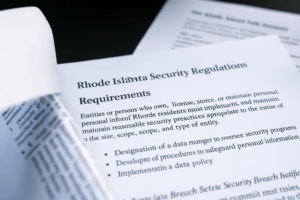White House’s Decisive Action to Counter Chinese Technological Prowess
In a decisive move to fortify America’s maritime assets, the White House has issued an Executive Order aimed at enhancing the cybersecurity of the nation’s ports. This strategic action is designed to safeguard these crucial gateways from potential cyber threats, particularly those emanating from Chinese technology embedded within cargo cranes.
America’s economic vitality and national security are inextricably linked to the robustness of its Marine Transportation System (MTS). This network, integral to the nation’s prosperity, supports over $5.4 trillion in economic activity annually and underpins the employment of more than 31 million Americans. Given the MTS’s reliance on digital systems for operations ranging from navigation to cargo movement, the potential for cyber threats to disrupt this critical infrastructure is a pressing concern. The White House’s initiative, therefore, represents a proactive approach to mitigating such vulnerabilities, ensuring the continuance of America’s economic and security interests.
Explore our Managed Service Offerings
Worcester’s Top Managed Service Provider
Central to this initiative is the bolstering of the Department of Homeland Security’s (DHS) authority to address maritime cyber threats directly. The Executive Order empowers the U.S. Coast Guard to enforce cybersecurity standards, conduct inspections, and respond to incidents that may compromise the safety and security of the maritime domain. This includes the authority to control the movement of vessels presenting cyber threats and mandates the reporting of such incidents.
A specific focus of the order is the cybersecurity of ship-to-shore cranes manufactured by the People’s Republic of China. The U.S. Coast Guard has been directed to issue a Maritime Security Directive targeting these cranes, requiring owners and operators to take decisive actions to secure them and their associated digital systems. This move underscores the Administration’s commitment to securing the maritime sector’s digital ecosystem against espionage and sabotage.
The backdrop to this initiative is a broader concern over the pervasive presence of Chinese-made cranes in U.S. ports. With a dominant market share, the security implications of such equipment have drawn heightened scrutiny. This initiative is part of a larger effort to reinvigorate America’s industrial base, with the Administration announcing significant investments to enhance domestic manufacturing capabilities for port cranes. This not only addresses cybersecurity concerns but also aims to revitalize the nation’s manufacturing sector.
Discover Our Compliance Management Solutions
Worcester’s Leading Provider of Compliance Services
The importance of cybersecurity and network security in safeguarding America’s ports cannot be overstated. This initiative represents a comprehensive approach to enhancing the resilience of the nation’s maritime infrastructure against 21st-century threats. By prioritizing the security of critical infrastructure, the White House is taking a significant step forward in protecting America’s economic and national security interests from the challenges posed by an increasingly digital and interconnected world.
Would you like to read more about how this initiative is shaping the future of maritime security? Here are some links to further explore the story from different perspectives:
Discover our IT Solutions for Your Industry
Worcester’s Top Managed Service Provider



